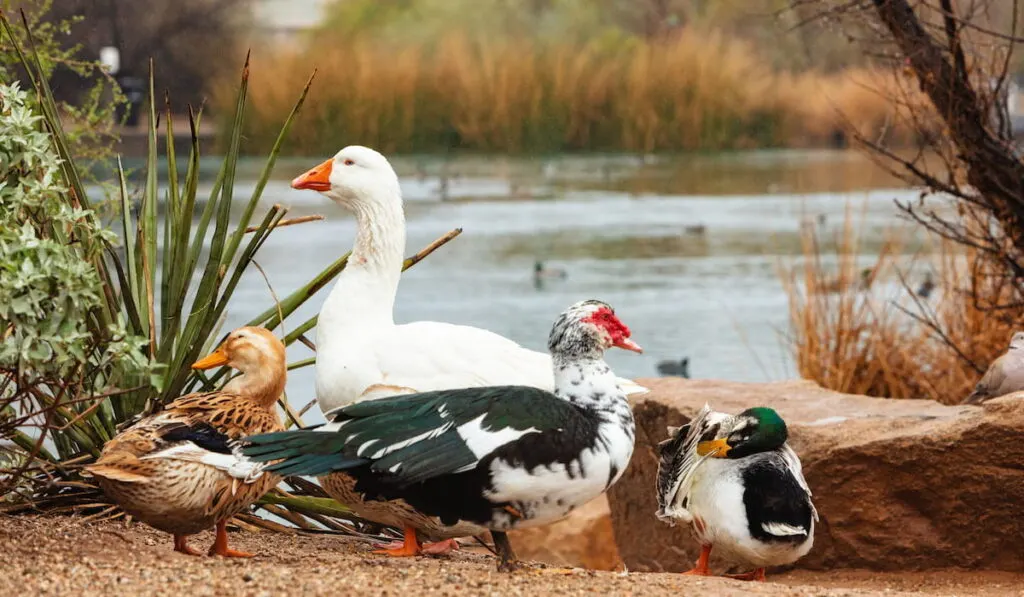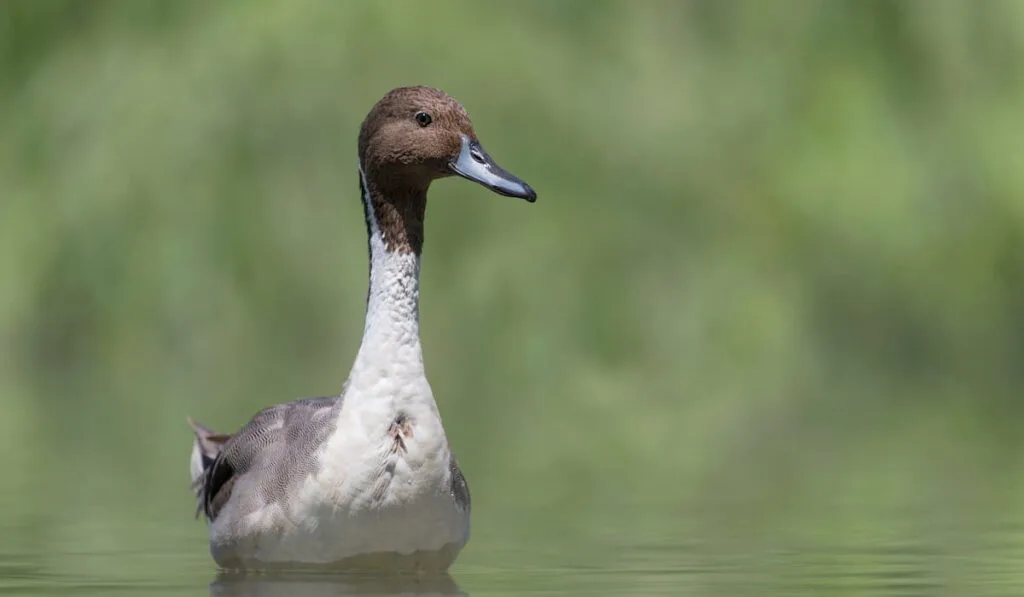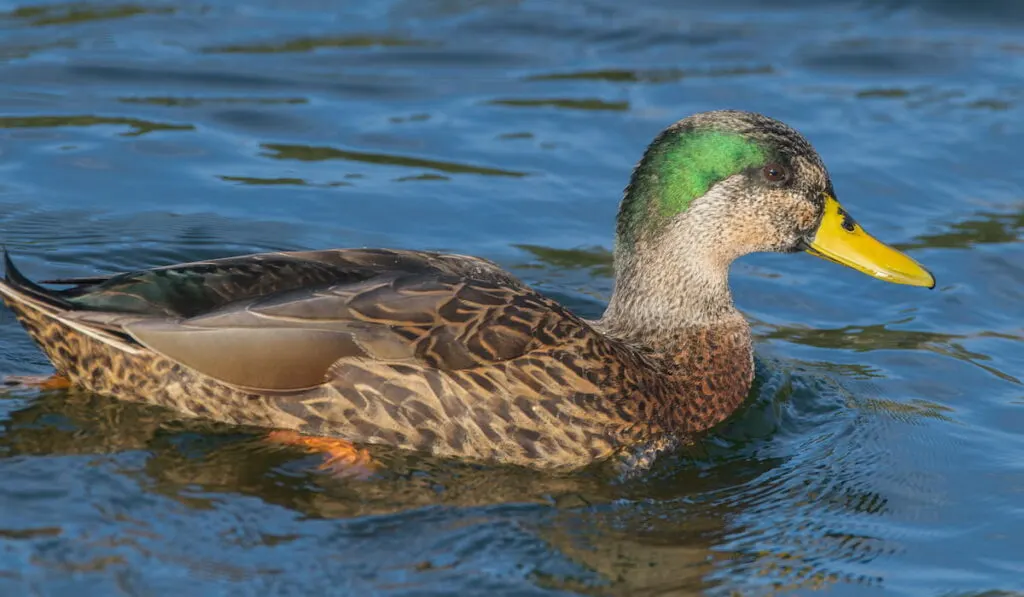People have been trying to find ways to interbreed different animals for many years. Breeding different species, or hybridization, has had mixed results, with the mule being the best example of success.
However, not all species are able to reproduce together.
If you want to learn more about hybridization or simply want to know if you can create your own breed of bird, keep reading!
Table of Contents
Can Ducks and Geese Breed?
Geese and ducks are unable to breed. Though a duck and a goose may attempt to mate if left together, it will not result in hybrid offspring.

In nature, these waterfowl tend to stay with their own species. Despite the chances of a duck and goose choosing to mate in captivity, the likelihood of a pairing in the wild is very low.
However, ducks and geese are so similar they can even at times look after each other’s offspring, known as brood amalgamation.
This process has been observed across forty-one distinct types of waterfowl. It can happen when a mother loses a child which then enters the care of a different waterfowl with similar maternal instincts.
Despite their habit of living close together, ducks’ and geese’s genetics are not as compatible as some ambitious breeders would like.
Unlike horses, who have created several hybrids (mules, zorses, and zeedonks), ducks and geese are incapable of creating any offspring.
While the union will not be fruitful, the mating process of a goose and duck will not harm either animal.
Examples of Waterfowl Hybrids
While it may not be possible to interbreed ducks and geese, waterfowl still account for more hybrid species than any other type of bird.
There are a number of duck and goose hybrids that cross two different species of the same bird, though it happens more frequently with ducks.
Ducks bond seasonally, while geese mate for life, thus allowing for more variation from ducks. Ducks also struggle to identify hens of the same species.
Several of these hybrids end up being infertile or “mule” ducks.

The most common duck hybrid is a cross between a Mallard and a Pintail. Mallards are also known to breed with black ducks, shovelers, wigeons, and other species.
A common hybrid found among geese is the combination of Snow Geese and Specklebelly, which can be found in arctic areas of North America.
This hybrid is harder to spot, as it looks similar to other arctic waterfowl.
A more easily identifiable but slightly rarer hybrid of goose is the Snow and Canada Goose hybrid, which can be spotted very easily by its white or pale-colored head.
You will be able to see them easily in a flock of Canada or Snow geese.
Why Do Hybrids Exist?
Hybrids allow animals to evolve and adapt to their environment, using the helpful traits of their descendants to their advantage.
Though some may think humans were the first to practice interbreeding, hybridization does exist in nature.
However, there are biological complications that can present themselves when two species reproduce together.

The main drawback is that the offspring of different species is very likely to be infertile. Even though the two animals were able to reproduce, their descendants will not be able to.
Let’s look at the fusion of lions and tigers, known as “ligers”. Ligers are usually sterile. Infant mortality is fairly high for ligers, and they typically suffer from genetic defects and low life expectancy.
However, the large size of these hybrid creatures has made them a very popular novelty for big cat enthusiasts and exotic breeders.
Hybridization has likely existed for a long time, as 10% of all animal species have come from hybridization.
Conclusion
Though ducks and geese are not able to breed successfully, they can still live together. Both are social creatures by nature and should get along with no problems.
If you would like to learn more about interbreeding, we encourage you to research further online or at your local library.
